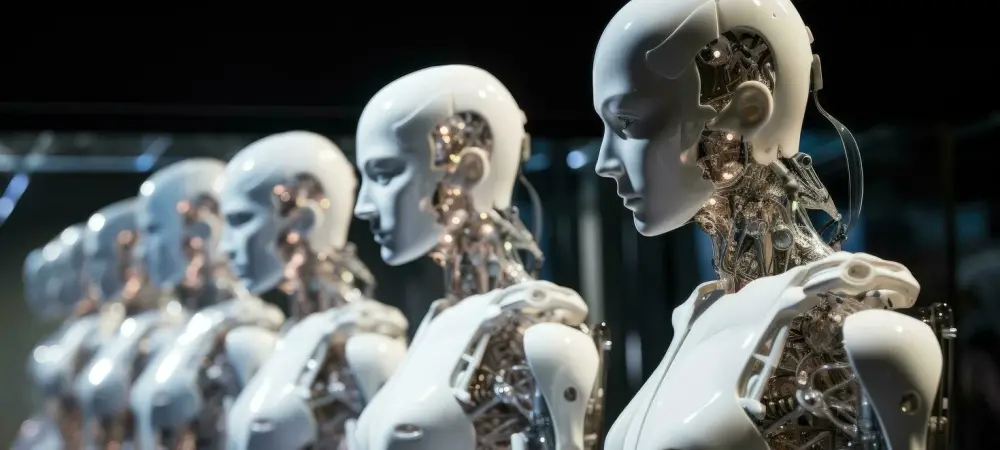In an era where technology and automation increasingly dominate headlines, potential disruptions to traditional manufacturing processes are garnering significant attention. As part of this movement, Nvidia is steering its strategy towards producing some of its advanced AI supercomputers domestically in the United States. This shift not only aims to navigate complex tariff landscapes but also seeks to innovate the manufacturing sphere by employing humanoid robots. Collaborating with industry giants like Foxconn and Wistron, Nvidia is establishing supercomputer production facilities in Houston and Dallas. Promoted as a crucial contributor to U.S. job creation, this initiative also seeks to delve deep into automation possibilities with humanoid robotics playing a central role.
Nvidia’s Strategic Collaborations
Nvidia’s partnership with tech leaders Foxconn and Wistron has laid the groundwork for novel manufacturing plants in Texas, promising not just local employment boosts but groundbreaking automation via humanoid robots. These robots, being developed in Foxconn’s facility in Kaohsiung, Taiwan, represent a convergence of advanced robotics and AI. Designed to assist and enhance production processes, these mechanical assistants will soon transition from development to practical application. By late this year, two distinct humanoid prototypes—a legged version and one equipped with wheels—intend to make their public debut, showcasing the innovative strides being taken. Alongside, the robust functionality is being shaped via the Isaac GR00T platform, which Nvidia has crafted to support broad-spectrum robotic innovations, heralding a new age of manufacturing in the tech realm. The deliberate move towards humanoid robotics is a testament to Nvidia’s broader vision of embedding robotic intelligence deeply into manufacturing methodologies. The exploration with Foxconn isn’t isolated; similar technological adaptations are being witnessed globally. Foxconn has expressed its dedication by also engaging with companies like UBTech to further enhance design and efficiency. As Nvidia CEO Jensen Huang projects, the presence of humanoid robots in industrial settings will increase markedly in the near future, promising drastic transformations in production dynamics and efficiency. This progressive vision aligns with a fundamental shift towards more agile and responsive manufacturing environments where technology takes center stage.
Emerging Interests in Robotics
Parallel to Nvidia’s ventures, SoftBank Group, spearheaded by Masayoshi Son, is deeply invested in amplifying robotic and AI capabilities within the United States. The establishment of a sprawling campus in Arizona signifies a bold commitment to integrating advanced tech solutions into day-to-day operations. This investment emerges despite SoftBank’s existing financial challenges, highlighting a decisive pursuit of innovation. Collaborating with prominent tech entities like TSMC, SoftBank seeks to propel its robotics agenda further, albeit detailed engagements with these companies remain somewhat veiled. Nonetheless, this move underlines the growing global appetite for automated solutions to production and tech challenges.
As firms like SoftBank continue to push boundaries, the entire robotics industry stands poised for rapid evolution. The focus rests heavily on integrating these technologies not only to streamline operations but also to mitigate reliance on intricate global supply networks. The ripple effects of such advancements could redefine conventional labor paradigms, urging industries to re-evaluate and adapt swiftly. This interest and investment signify a pivotal juncture for technology and employment landscapes, inviting industries worldwide to rethink operational strategies and embrace cutting-edge solutions.
Future Implications and Considerations
In today’s world, where technology and automation are becoming central topics, there’s growing concern about their impact on traditional manufacturing processes. Within this landscape, Nvidia is making strides by shifting part of its AI supercomputer production to the United States. This decision is not only a strategic move to bypass tricky tariff situations but also an effort to reinvent manufacturing through the use of advanced technologies like humanoid robots. By teaming up with major industry players like Foxconn and Wistron, Nvidia is setting up production centers in Houston and Dallas. These facilities are being advertised as vital to generating employment opportunities within the U.S., while also exploring the potential of automation where humanoid robotics take a leading role. This initiative underscores Nvidia’s commitment to not just adapt to technological shifts but also embrace them, suggesting a future where humans and advanced technology collaboratively drive innovation in manufacturing.

